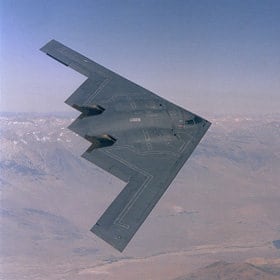
Northrop Grumman [NOC] has been chosen to build the Air Force’s next-generation long-range bomber, a major aircraft manufacturing contract that is worth an estimated $80 billion.The incumbent manufacturer of the B-2 Spirit bomber beat out a heavyweight team comprised of Boeing [BA] and Lockheed Martin [LMT]. The contract award will significantly shape the defense aerospace industry for decades, experts have said.The decision to have Northrop Grumman build the long-range strike bomber (LRS-B) effectively preserves Northrop Grumman’s defense aircraft manufacturing plant and spreads…

 By
By 











